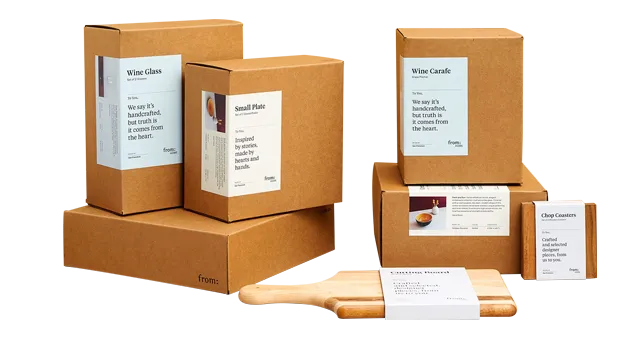The Difference Between Rigid and Kraft Packaging
Understanding Packaging: Rigid vs. Kraft
In the realm of packaging, two terms often arise: rigid and Kraft. Understanding their differences is crucial for businesses.
What is Rigid Packaging?
Rigid packaging refers to sturdy materials like cardboard or plastic. It maintains its shape and offers excellent protection.
Benefits of Rigid Packaging:
- Durability: Rigid packaging provides robust protection, ensuring products remain intact during transportation.
- Customization: It allows for intricate designs and can be tailored to fit specific product dimensions.
- Perceived Value: Rigid packaging often conveys luxury and sophistication, enhancing brand perception.
Applications of Rigid Packaging:
- Electronics: Items like smartphones and laptops benefit from the structural support of rigid packaging.
- Cosmetics: High-end cosmetic products often come in rigid packaging, elevating their perceived value.
- Gifts: Luxury items and gift sets are commonly presented in rigid boxes for an added touch of elegance.
Understanding Kraft Packaging
Kraft packaging, on the other hand, is made from recycled materials, typically brown in color. It’s renowned for its eco-friendliness.
Advantages of Kraft Packaging:
- Sustainability: Kraft packaging is biodegradable and recyclable, reducing environmental impact.
- Cost-Effectiveness: Utilizing recycled materials often makes Kraft packaging a more economical choice.
- Aesthetic Appeal: Its natural, rustic appearance can resonate well with eco-conscious consumers.
Common Uses of Kraft Packaging:
- Food Packaging: Kraft paper bags and boxes are popular choices for packaging food items like sandwiches and pastries.
- E-commerce: Many online retailers opt for Kraft packaging due to its eco-friendly image and cost-effectiveness.
- Crafts and DIY Projects: Kraft paper is a favorite material for artistic endeavors and DIY packaging solutions.
Key Differences
Material Composition:
- Rigid packaging typically consists of sturdy materials like cardboard or plastic, offering robust protection.
- Kraft packaging is made from recycled materials, promoting sustainability and eco-friendliness.
Structural Integrity:
- Rigid packaging maintains its shape and offers excellent structural support, ideal for fragile or valuable items.
- Kraft packaging, while sturdy, may not provide the same level of protection as rigid materials.
Customization Options:
- Rigid packaging allows for intricate designs and customization, making it suitable for high-end products.
- Kraft packaging offers a more natural aesthetic and limited customization options, aligning well with eco-friendly brands.
Choosing the Right Packaging
Selecting between rigid and Kraft packaging depends on various factors such as product nature, brand image, and target audience.
Considerations for Rigid Packaging:
- Ideal for luxury or fragile items requiring maximum protection.
- Enhances brand perception and adds a touch of sophistication to products.
- Suitable for businesses aiming to convey a sense of exclusivity and quality.
Considerations for Kraft Packaging:
- Perfect for eco-conscious brands looking to minimize their environmental footprint.
- Offers a rustic, natural aesthetic that resonates well with certain consumer demographics.
- Cost-effective and sustainable, making it an attractive option for businesses focused on sustainability.

